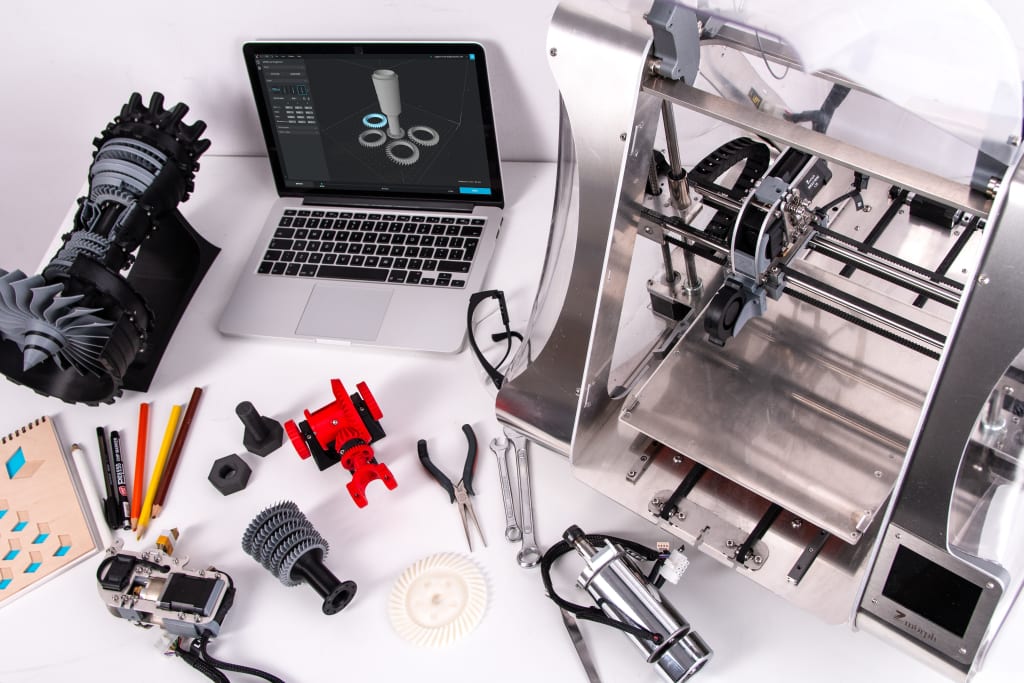4 Ways to Use Digital Twins Effectively in Everyday Operations
Ways that technology is beginning to make things easier across many disciplines

The term ‘digital twin’, admittedly, sounds very cool but few people could actually describe them in detail and define how digital twins could be used by businesses. However, in contrast to other vague but cool-sounding technology trends, digital twins are very real and very effective at what they do, which is making life a lot simpler for a wide variety of industries.
Want to know what all the fuss is about? Then read on; regardless of the sector you’re operating in, digital twins could be just the thing you need.
What Are Digital Twins?
In layman’s terms, digital twins are perfect digital copies of…well, almost anything, really. A product? Sure, it’s possible to create a 3D replica with all the features and design elements. A factory? A bit more difficult but still doable. A city? While it may sound far-fetched, there are digital twins of entire cities that nearly flawlessly replicate their infrastructure and key processes.
Originally, digital twins were created by NASA who had to test space capsules without spending too much money on creating prototypes. Several years later, the tech is far easier to use and can be adopted by nearly every business on the planet.
Sounds a bit implausible? Here are four cases of real-world usage of digital twins.
Manufacturing: Improving Quality Control
To run proper quality control in manufacturing, businesses are willing to invest billions in prototype testing, engineer training and sourcing rare materials to improve the reliability of their assembly lines. Digital twins could cut down these investments by at least 20%.
A very simple digital twin in the manufacturing sector combines a 3D model of a product with information sourced from the bill of materials (BOM) and the as-manufactured BOM. This allows manufacturers to quickly see what specific inputs go into producing their outputs and what components should be improved first to address threats to quality and reliability.
In some cases, the right implementation of digital twins could reduce product recalls and reworks by 15-20%. While you’d still need to run prototype tests and conduct quality audits, digital twins can greatly increase quality without requiring a lot of investments.
Healthcare: Providing Access to Real-Time Patient Data
While a digital twin of the human body sounds a bit futuristic, the technology is much more plausible than you think.
By attaching small (no larger than a band-aid) sensors to a human body, it’s possible to stream real-time data from a patient (e.g. their blood pressure) to a cloud platform. From there, the hospital software suites can interpret sudden changes in the patient’s heartbeat, and immediately notify doctors of any upcoming threats or crises.
The technology originally debuted in 2019 and is not yet widely used by hospitals in developed countries. The developers predicted that digital twins could drastically reduce the number of false alarms but, judging from the rapid pace of the development of digital twins, the possibilities are limitless.
Marketing: Increasing Loyalty
For years, content and search engine optimisation have been the kings of digital marketing. But digital twins definitely have the potential to become the next big thing. While it’s still too early to judge, the German company Kontin has recently presented an app for what they called object marketing. This piece of software created a perfect digital twin of a specific product and allowed customers to view this copy from their smartphones or tablet devices.
What’s so revolutionary about that? Well, a digital twin eliminates all concerns about product authenticity. By comparing your product with a digital copy, you can immediately recognise the tell-tale signs of whether your luxury purse or perfume is genuine.
The app also allows users to document the history of using a product by taking selfies or posting to social media. In turn, manufacturers and retailers can use this as a platform for loyalty marketing. Simply allocating reward points for every tweet or photo featuring a digital twin or a real product could quickly turn regular customers into veritable brand ambassadors.
Finally, digital twins are great for giving feedback. Instead of spending hours talking with a support agent on the phone, clients could use digital twins to pinpoint the exact areas or features they like or dislike. This can be a huge boon to subsequent product development processes.
Public Services: Improving Safety
Working for public services typically poses a significant challenge for engineers and manufacturers. In some cases, signing a public service partnership contract involves a huge task such as designing a 1.1-kilometre bridge within the space of several months.
Sounds implausible? Yet this is exactly what happened in Genoa where the Morandi Bridge collapsed and required travellers to take a detour worth about 120 kilometres. The local council needed an immediate replacement but finding a company that was willing to undertake such a risky project proved very troublesome.
Fortunately, Italferr, an engineering company, approached this problem by using digital twins and finalised their project well ahead of schedule. How did they do it? The firm created a digital twin of the nearby aqueduct and shared the model with all the teams working on the bridge. Engineers in different departments, therefore, were able to see exactly what challenges threatened the project and what was done by their colleagues to address these obstacles.
The bridge was finally completed in April 2020 and offered at least some closure to all the families affected by the Morandi tragedy two years prior.
Final thoughts
Although digital twins certainly seem like something out of a James Cameron movie, the technology is very real and is here to stay. This is great, as the advantages offered by digital twins to different industries are hard to overestimate. We hope that our guide has incentivised you to learn more about digital twins and look for new ways to use this technology in your future business pursuits.
Author bio
Ellie Richards is an online Marketing Manager for Original PhD, specialising in PhD thesis writing. She is passionate about researching and writing on various topics, including Education, Marketing, and Technology.
About the Creator
Ellie Richards
Ellie Richards is an online Marketing Manager for Original PhD, specialising in PhD thesis writing. She is passionate about researching and writing on various topics, including Education, Marketing, and Technology.






Comments
Ellie Richards is not accepting comments at the moment
Want to show your support? Send them a one-off tip.